


|

|
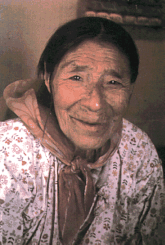
|
Remnants of her world in the bush ornament her home. Beaver pelts adorned with blue glass beads hang by the door; native art hangs serenely on the walls; colors glow, brightening the rooms.
It's been 30 years since Dr. Mary Black-Rogers stepped off a small plane into the rugged wilderness of northern Ontario, a step that planted her firmly in serious bush country. This was a long way from the sunny city of Venice Beach, California. Colleagues of the freshly minted anthropologist thought she was crazy, she says, but the chance to continue her study of the Ojibwa, started with her dissertation, was too fascinating to pass up.
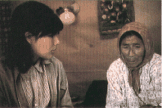
|
Weagamow Lake, more than 300 kilometres north of Sioux Lookout, and just east of the Manitoba border, was inhabited by some 150 adults, 200 children, three churches, two stores, one school and many board houses. Here, Black-Rogers lived and worked among the Cranes, a group so isolated they were not "discovered" by federal and provincial officers until the 1920s.
It was her extensive field work with Ojibwa in Minnesota that prompted a job offer from Dr. Edward Rogers, curator of ethnology at the Royal Ontario Museum, who had spent time previously in Weagamow Lake and studied the band's history, culture and adaptation to the harsh wilderness.
They made a good team: both anthropologists, she studied belief systems, and he, survival. Shortly thereafter, they married. And together, they delved into a world largely untouched by outsiders until after the turn of the century. Removed from the direct fur-trade routes, the people of Weagamow Lake missed much of the impact of European Canadians.
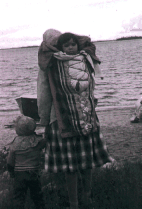
|
While she learned, Black-Rogers also made an impact on the Cranes. One woman she met "adopted" her. "I was replacing a baby she'd had 50 years before and died.who was born the same decade as I was, and was also named Mary."
Because she was a "people researcher," Black-Rogers wanted stories. However, many Cranes weren't comfortable with "passing along their Indian heritage." As a newly-Christianized band, Black-Rogers says many elders had rejected their aboriginal past. But one by one, they started to trust her, and opened up. Many remembered the traditional way of life before the outside influences crept in.
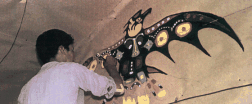
|
Using teenagers as interpreters, the same teens who loved to hang out at the Rogers' home for cookies and cocoa and leaf through books and magazines, Black- Rogers began to record the stories: the tales, myths and legends of the Cranes. After a little digging, she and her husband also unearthed their origins.
Other researchers believed the name "Crane" was pegged to a clan system or totem symbol. In fact, Crane is the group name for descendants of a man called "Ojicak," the semi-legendary "father of the people," as their tales described him.
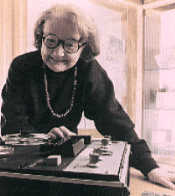
Dr. Mary Black-Rogers. The above photos are just a few of the many in the collection she has donated to the U of A Archives. |
Black-Rogers says Hudson Bay records show Ojicak was busy in the procreation department and by 1795 fathered 23 children with three wives. And perhaps with so many little ones around, the children merited a diminutive. Hence, Ojicak, or "Crane" probably developed into "Ojicakonsak," or "little cranes."
Taking his sons and sons-in-law out to trap in the early 1800s, the group developed a rowdy kind of reputation among fur traders ("And what group of 16 teen-aged sons wouldn't?" asks Black-Rogers), and were collectively referred to as the "Cranes." The name stuck for generations of offspring in and around what is now known as Weagamow Lake. The Rogers were able to trace direct descent from one or another of the sons of Crane to about half the core families in this area.
This wasn't the only thing Black-Rogers found during her archival searches of Hudson Bay, missionary and government records. She saw the name of a relative.
".I thought, 'Oh, that sounds like the guy I heard about who is my great-great-grandfather.' "A French-Canadian blacksmith with the Northwest Company, Antoine Pepin married a Metis woman who was part Plains Ojibwa. They settled in what is now St. Paul, Minnesota, Black-Rogers' birthplace.
For someone who always wanted to travel further north than Minnesota, Black-Rogers didn't stop at Weagamow Lake. She now calls Edmonton home and plans to go to Great Slave Lake for further field studies: Metis origins in the north and their descendants. She's helping a Metis association in Fort Resolution, Northwest Territories trace their ancestors.
Meanwhile, she's sifting through and helping to archive the massive Rogers' collection of meticulous notes, interviews, research, and slides of native studies she and her late husband gathered over the years and which Black-Rogers has donated to the U of A archives.
![[Folio]](http://www.ualberta.ca/~publicas/folio/gif/small/folio.gif)
Folio front page |
![[Office of Public Affairs]](http://www.ualberta.ca/~publicas/gif/small/opahome.gif)
Office of Public Affairs |
![[University of Alberta]](http://www.ualberta.ca/~publicas/gif/small/uahome.gif)
University of Alberta |